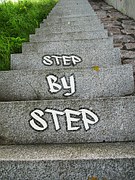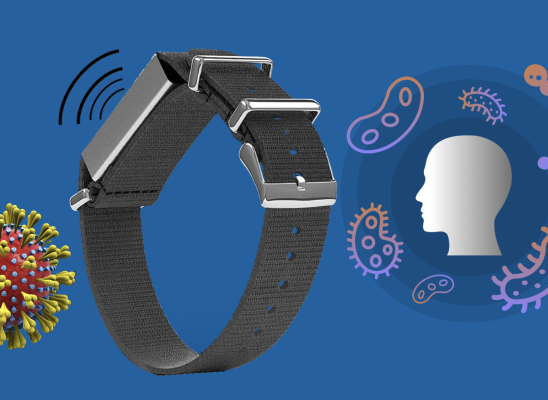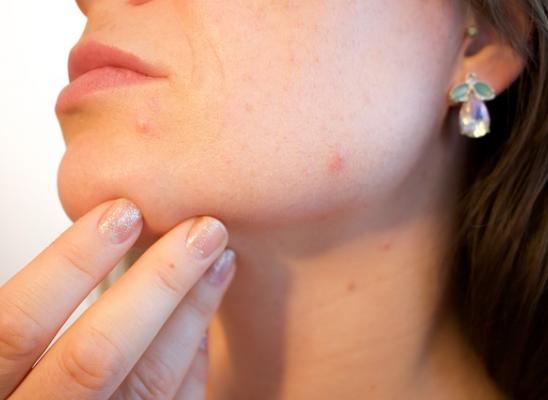Treating Dermatillamania with Dialectical Behaviour Therapy
Online test
Find out the severity of your symptoms with this free online test
 Compulsive skin picking is a body-focused repetitive behavior (BFRB) that results in the destruction of one's skin. The face is often times a primary target but other areas of the body can be involved i.e. cuticles, arms, legs or scalp. This behavior is often unconscious or automatic; as an individual may be unaware he or she is engaging in skin picking, and once they have started, it is difficult to interrupt. It can take on a self-perpetuating cycle; individuals engage in the behavior, experience consequences including guilt and shame which is uncomfortable and therefore leads to a repeat of this cycle. When skin picking is done in a compulsive manner it is referred to as dermatillomania and has been classified as a form of an impulse control disorder. There is a high co-morbidity of skin picking in individuals that have obsessive compulsive disorder, body dysmorphic disorder and trichotillomania. Skin picking also has been found to be present in individuals with anxiety disorders and eating disorders and utilized as a means of regulating emotions to promote self-soothing and distractions (in maladaptive manners). Therefore, use of Dialectical Behavior Therapy (DBT) has been effective in developing effective means of coping and promoting emotional regulation, distress tolerance skills and mindfulness skills. Antidepressant medications have also been found to be helpful for treating this condition and co-morbid emotions i.e. depression and anxiety. The most effective treatment typically involves a combination of psychotropic medications combined with a Cogntive Behavioral Therapy (CBT) based form of treatment.
Compulsive skin picking is a body-focused repetitive behavior (BFRB) that results in the destruction of one's skin. The face is often times a primary target but other areas of the body can be involved i.e. cuticles, arms, legs or scalp. This behavior is often unconscious or automatic; as an individual may be unaware he or she is engaging in skin picking, and once they have started, it is difficult to interrupt. It can take on a self-perpetuating cycle; individuals engage in the behavior, experience consequences including guilt and shame which is uncomfortable and therefore leads to a repeat of this cycle. When skin picking is done in a compulsive manner it is referred to as dermatillomania and has been classified as a form of an impulse control disorder. There is a high co-morbidity of skin picking in individuals that have obsessive compulsive disorder, body dysmorphic disorder and trichotillomania. Skin picking also has been found to be present in individuals with anxiety disorders and eating disorders and utilized as a means of regulating emotions to promote self-soothing and distractions (in maladaptive manners). Therefore, use of Dialectical Behavior Therapy (DBT) has been effective in developing effective means of coping and promoting emotional regulation, distress tolerance skills and mindfulness skills. Antidepressant medications have also been found to be helpful for treating this condition and co-morbid emotions i.e. depression and anxiety. The most effective treatment typically involves a combination of psychotropic medications combined with a Cogntive Behavioral Therapy (CBT) based form of treatment.
What is DBT?
Dialectical Behavior Therapy (DBT) is a cognitive behavioral treatment that was originally developed to treat chronically suicidal individuals diagnosed with borderline personality disorder (BPD) and it is now recognized as the gold standard psychological treatment for this population. In addition, research has shown that it is effective in treating a wide range of other disorders such as skin picking, substance dependence, depression, post-traumatic stress disorder (PTSD), and eating disorders. The term "dialectical" means a synthesis or integration of opposites. The primary dialectic within DBT is between the seemingly opposite strategies of acceptance and change. For example, DBT therapists accept clients as they are while also acknowledging that they need to change in order to reach their goals. In addition, all of the skills and strategies taught in DBT are balanced in terms of acceptance and change. For example, the four skills modules include two sets of acceptance-oriented skills (mindfulness and distress tolerance) and two sets of change-oriented skills (emotion regulation and interpersonal effectiveness).
How does DBT work?
Clients who receive DBT typically have multiple problems that require treatment. DBT uses a hierarchy of treatment targets to help the therapist determine the order in which problems should be addressed. The treatment targets in order of priority are (based on http://behavioraltech.org/):
- Life-threatening behaviors: First and foremost, behaviors that could lead to the client's death are targeted, including all forms of suicidal and non-suicidal self-injury, suicidal ideation, suicide communications, and other behaviors engaged in for the purpose of causing bodily harm.
- Therapy-interfering behaviors: This includes any behavior that interferes with the client receiving effective treatment. These behaviors can be on the part of the client and/or the therapist, such as coming late to sessions, cancelling appointments, and being non-collaborative in working towards treatment goals.
- Quality of life behaviors: This category includes any other type of behavior that interferes with clients having a reasonable quality of life, such as mental disorders, relationship problems, and financial or housing crises.
- Skills acquisition: This refers to the need for clients to learn new skillful behaviors to replace ineffective behaviors and help them achieve their goals.
Within a session, presenting problems are addressed in the above order. For example, if the client is expressing a wish to commit suicide and reports recurrent binge eating or skin picking, the therapist will target the suicidal behaviors first. The underlying assumption is that DBT will be ineffective if the client is dead or refuses to attend treatment sessions.
Stages of Treatment
DBT is divided into four stages of treatment. Stages are defined by the severity of the client's behaviors, and therapists work with their clients to reach the goals of each stage in their progress toward having a life that they experience as worth living.

Stage 1
The client is miserable and their behavior is out of control: they may be trying to kill themselves, self-harming, using drugs and alcohol, and/or engaging in other types of self-destructive behaviors. When clients first start DBT treatment, they often describe their experience of their mental illness as "being in hell." The goal of Stage 1 is for the client to move from being out of control to achieving behavioral control.
Stage 2
They're living a life of quiet desperation: their behavior is under control but they continue to suffer, often due to past trauma and invalidation. Their emotional experience is inhibited. The goal of Stage 2 is to help the client move from a state of quiet desperation to one of full emotional experiencing. This is the stage in which post-traumatic stress disorder (PTSD) would be treated.
Stage 3
The challenge is to learn to live: to define life goals, build self-respect, and find peace and happiness. The goal is that the client leads a life of ordinary happiness and unhappiness.
Stage 4
For some people, a fourth stage is needed: finding a deeper meaning through a spiritual existence. Stage 4 is posited specifically for those clients for whom a life of ordinary happiness and unhappiness fails to meet a further goal of spiritual fulfillment or a sense of connectedness of a greater whole. In this stage, the goal of treatment is for the client to move from a sense of incompleteness towards a life that involves an ongoing capacity for experiences of joy and freedom.
Is it Effective?
Research has shown DBT to be effective in reducing suicidal behavior, non-suicidal self-injury, psychiatric hospitalization, treatment dropout, substance use, anger, and depression and improving social and global functioning. But is it effective in the treatment of skin picking disorder. While DBT is mostly targeted at clients with suicidality, as a type of CBT there are certainly a number of elements that can be effective in the treatment of skin picking disorder. For example stage 3 and 4 is closely linked to the section in the SkinPick.com online program that explores values and life goals. We also incorporate acceptance and commitment therapy (ACT), which also has alot of overlap with DBT. CBT as an overall frame of reference has been proven to be effective in the treatment of BFRBs in general, but skill and expertise from the therapist and commitment from the client is required for effectiveness to be maximised.
treatment dropout, substance use, anger, and depression and improving social and global functioning. But is it effective in the treatment of skin picking disorder. While DBT is mostly targeted at clients with suicidality, as a type of CBT there are certainly a number of elements that can be effective in the treatment of skin picking disorder. For example stage 3 and 4 is closely linked to the section in the SkinPick.com online program that explores values and life goals. We also incorporate acceptance and commitment therapy (ACT), which also has alot of overlap with DBT. CBT as an overall frame of reference has been proven to be effective in the treatment of BFRBs in general, but skill and expertise from the therapist and commitment from the client is required for effectiveness to be maximised.
Online test
Find out the severity of your symptoms with this free online test
Start your journey with SkinPick
Take control of your life and find freedom from skin picking through professional therapy and evidence-based behavioral techniques.
Start Now



